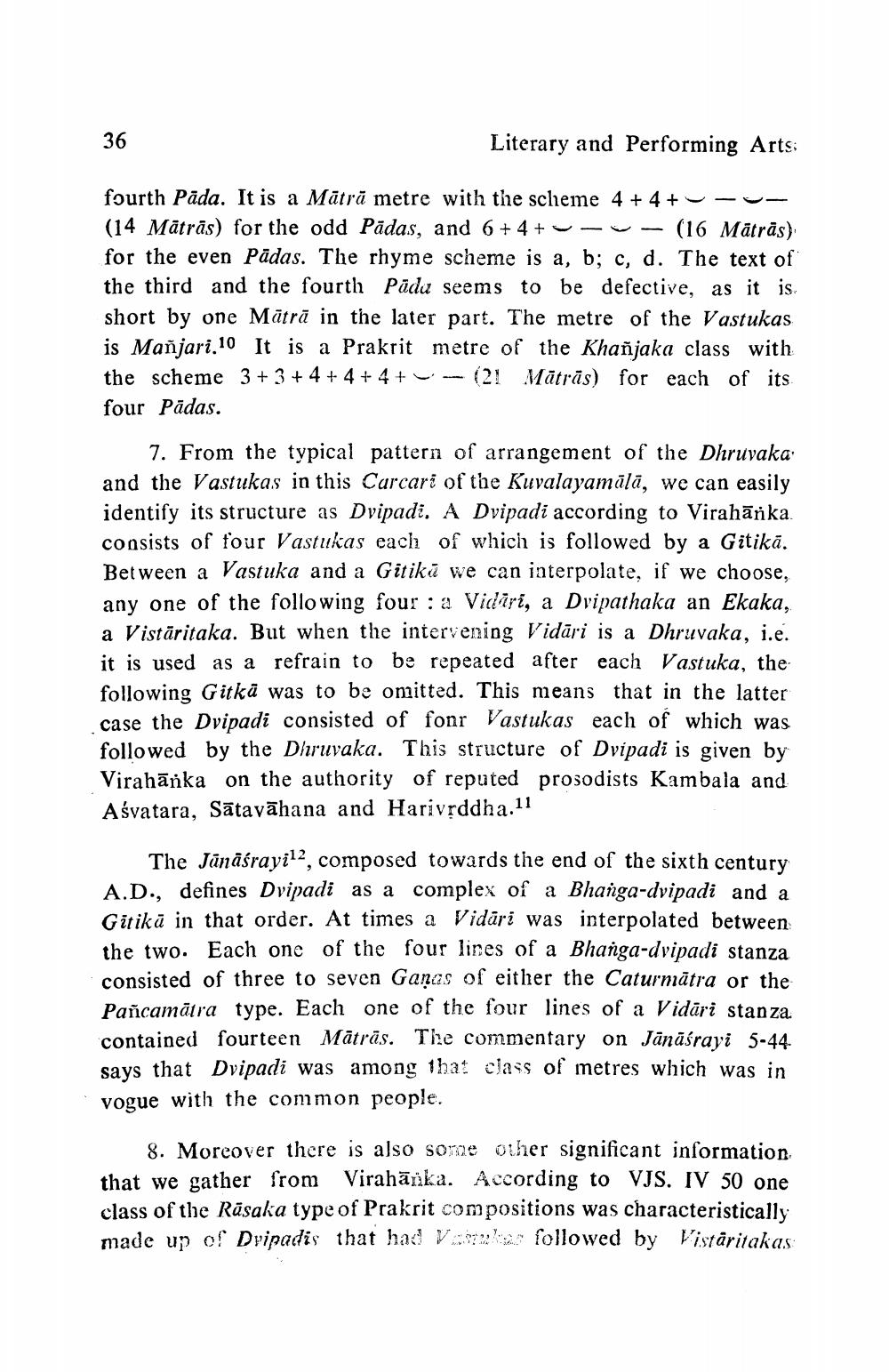________________
36
Literary and Performing Arts:
fourth Päda. It is a Mātrā metre with the scheme 4 + 4 + -O(14 Mātrās) for the odd Pādas, and 6 + 4+ - - (16 Mātrās). for the even Pädas. The rhyme scheme is a, b; c, d. The text of the third and the fourth Päda seems to be defective, as it is short by one Mātrā in the later part. The metre of the Vastukas is Mañjari.10 It is a Prakrit metre of the Khañjaka class with the scheme 3+3 +4 + 4 + 4 + (21 Mātrās) for each of its four Pādas.
7. From the typical pattern of arrangement of the Dhruvaka and the Vastukas in this Carcari of the Kuvalayamālā, we can easily identify its structure as Dvipadi. A Dvipadi according to Virahārka. consists of four Vastukas each of which is followed by a Gitikā. Between a Vastuka and a Gitikā we can interpolate, if we choose, any one of the following four : a Vidāri, a Dvipathaka an Ekaka, a Vistäritaka. But when the intervening Vidāri is a Dhruvaka, i.e. it is used as a refrain to be repeated after each Vastuka, the following Gitkā was to be omitted. This means that in the latter case the Dvipadi consisted of fon Vastukas each of which was followed by the Dhruvaka. This structure of Dvipadi is given by Virahānka on the authority of reputed prosodists Kambala and Asvatara, Sātavāhana and Hariyrddha.11
The Jānāśrayilo, composed towards the end of the sixth century A.D., defines Dvipadi as a complex of a Bhanga-dvipadi and a Gitikā in that order. At times a Vidāri was interpolated between the two. Each one of the four lines of a Bhanga-dvipadi stanza consisted of three to seven Gaņas of either the Caturmātra or the Pañcamātra type. Each one of the four lines of a Vidāri stan za contained fourteen Mātrās. The commentary on Jānāśrayi 5-44 says that Dvipadi was among that class of metres which was in vogue with the common people.
8. Moreover there is also some other significant information, that we gather from Virahānka. According to VJS. IV 50 one class of the Rāsaka type of Prakrit compositions was characteristically made up of Dvipadis that had V. followed by Viståritakas:




